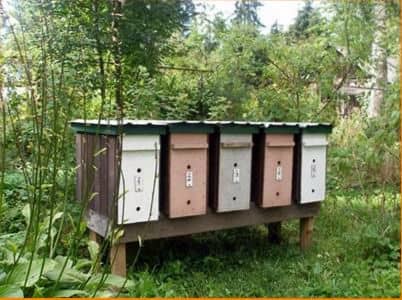Multiple Nucleus Hive

Usually, the nucleus hive has 2-4 compartments, while one wall is connected to each wall of the hive. A multi-site nucleus hive (MNU) is a hive that has 2 or more flocks on each side. With an increase in the number of ducts, the loss of the queens increases significantly. Most believe that the unimportant orientation of queens and bees is the main reason for this phenomenon.
Using observations on the behavior of bees on the tapping of the nucleus hive, using information on the orientation of the bees, other shortcomings of the MNU are established:
A) the transition of bees from one taphole to another, especially increasing with overheating of hives and selection of fetuses;
B) the landing of the queens returning from the voyage, on the walls of the hive is far from the tap, with subsequent entry into the near;
C) the orientation of the queens to the bees near the tap, without using landmarks with a special color, artificially created by beekeepers.
To eliminate the above phenomena, it is proposed to use a perimeter flank that surrounds each leaf from either side instead of the fence. In addition, a large space was used in the nucleus, which reduces the number of bees next to the tap in case of overheating, as well as in the strengthening of nuclei. This allows successful exploitation of 18-nucleus hives with 3 and 2 frames (145/250 mm), and offer three-time trials for production testing on apiaries for the withdrawal of queens, producing Carpathian and gray Caucasian bees.
For the experiments, only these rocks were used, and no differences in behavior were observed. Preliminary experiments conducted with the Central Russian bee showed that the hives we offer are absolutely unsuitable for this purpose.
At the moment, there is already a long-term experience in the operation of the 18-hive hive, which is a standard multi-frame hive-lag divided into branches, which has a common feeder, which allows simultaneous feeding of all cores. The front and rear walls are separated by vertical partitions into 2 parts with different colors. Each has 3 flanges located at the top of the triangle.
The results of the tests of the 18-hive hive allow us to state that 3 flanges on each wall with the use of peri-volute flanks significantly reduce the orientation errors of the queens and bees.
Multiple Nucleus Hive
